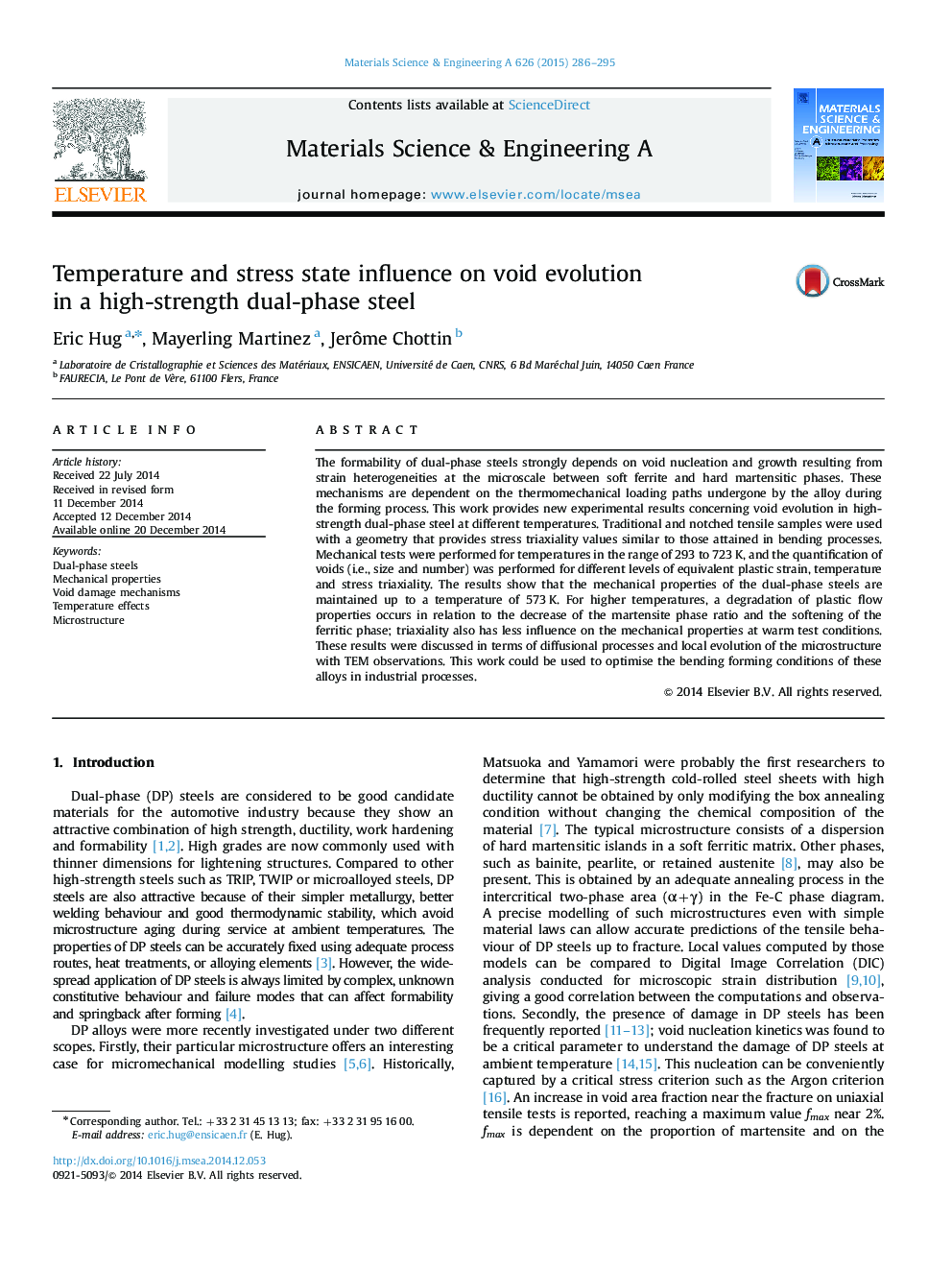| Article ID | Journal | Published Year | Pages | File Type |
|---|---|---|---|---|
| 7978861 | Materials Science and Engineering: A | 2015 | 10 Pages |
Abstract
The formability of dual-phase steels strongly depends on void nucleation and growth resulting from strain heterogeneities at the microscale between soft ferrite and hard martensitic phases. These mechanisms are dependent on the thermomechanical loading paths undergone by the alloy during the forming process. This work provides new experimental results concerning void evolution in high-strength dual-phase steel at different temperatures. Traditional and notched tensile samples were used with a geometry that provides stress triaxiality values similar to those attained in bending processes. Mechanical tests were performed for temperatures in the range of 293 to 723Â K, and the quantification of voids (i.e., size and number) was performed for different levels of equivalent plastic strain, temperature and stress triaxiality. The results show that the mechanical properties of the dual-phase steels are maintained up to a temperature of 573Â K. For higher temperatures, a degradation of plastic flow properties occurs in relation to the decrease of the martensite phase ratio and the softening of the ferritic phase; triaxiality also has less influence on the mechanical properties at warm test conditions. These results were discussed in terms of diffusional processes and local evolution of the microstructure with TEM observations. This work could be used to optimise the bending forming conditions of these alloys in industrial processes.
Related Topics
Physical Sciences and Engineering
Materials Science
Materials Science (General)
Authors
Eric Hug, Mayerling Martinez, Jerôme Chottin,
